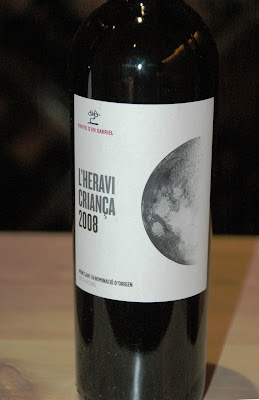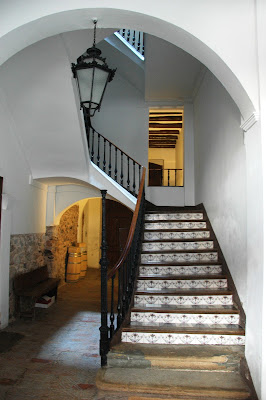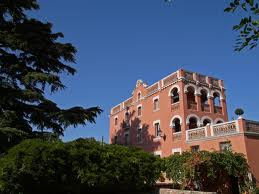Falset, Priorat's capital, with some 2'800 people, is not exactly a large metropolis, but has a charming old quarter and is, above all, the hub of a fascinating wine zone. Well, two.
Falset is the political capital of the Priorat comarca, a unit similar to a county or canton. Within the Priorat comarca we can find the DO Montsant and the DOQ (Denominaciò d'Origen Qualificada) Priorat. Most of Falset ground is in Montsant DO.
In the first weekend in May, Falset hosts the Fira del Vi on Saturday and Sunday, a public tasting where many wineries of both zones pour their wines, along with many activities for the whole family.
Interesting as this is, allowing to sample many wines, a number of parallel, more focused events in Falset or the surrounding villages easily steal the show. I have already mentioned some of them in previous posts, but I think that a general overview is needed.
Friday evening is the starting point.
At Capçanes the cooperative organizes the Garnatxa Night, with their own Garnatxa wines and others from guest wineries (DO Terra Alta this year), together with live music and tapes from nearby Michelin-starred restaurants.
At Falset takes place the only white wine event. After all, most of the Priorat & Montsant wine is red. But still two prestigious wine shops in Falset, Aguilo Vinateria and Vins i Olis del Priorat, convene most of the whites from the comarca and a handful of guests from other places. Oysters and artisan cheeses are offered along with the wines.
Still on Friday evening, at Porrera Carinyena wines are the star. This village has excellent old-vine Carinyena plots, but most of the wine coming from them reaches the market as blends with Garnatxa or other grapes. In the Tast de Carinyenes tasting, wineries pour the unblended Carinyena wines, usually from unlabeled bottles just filled from the barrels. All this in the town square, with a cold buffet available. This is really my favorite tasting of the weekend, as it offers wines that can not be found elsewhere, and the quality and variety (for such a small village) are stunning.
On Saturday morning, the Gratallops restaurant Les Figueres hosts the Tast amb Dones, or Tasting with Women, which is in fact a tasting of wines made by women oenologists (do not get the wrong ideas). A number of interesting wineries are represented.
Also on Saturday morning, and this year for the first time, Poboleda wines are on show in the premises of the Perinet winery.
On Saturday late afternoon, another of the classic tastings: Tast amb Llops, featuring the wines from some of the top wineries in Gratallops and organized by the Cal Llop (house of the Wolf) hotel. This is the event to taste wines from the Priorat pioneers: Perez, Barbier, Palacios, Glorian.
And on Saturday night, the Hotel Mas Figueres at Marçà puts together Vi de Nit, a dinner-cum-tasting usually featuring an impressive roll-call of Priorat and Montsant wineries, giving the best overview of the comarca output. If I had to take somebody to an introductory tasting of these two zones' top wines, this would be it.
A simpler, more relaxed alternative is to be found in Vi-Night at Les Figueres in Gratallops: tapes, wines and music.
On Sunday morning, and in the beautiful halls and terraces of the Cal Compte Hotel in Torroja, there is an event where the main features are the wines from the village. But also the two other archetypal Mediterranean crops are tasted in parallel: hand-made breads and Extra Virgin olive oils from the zone, often produced in small quantities by the wineries themselves.
The other event on Sunday morning is the Tast de les Mines (Tasting of the Mines), which ows its name to the mines that used to be worked in Bellmunt del Priorat. That is a vertical tasting of three vintages of the main wines from Bellmunt, El Molar and El Lloar.
On Sunday afternoon there are no significant events.
Not all wineries are present in the events. We must remember that in many cases they are family run, and they are spread thin in this weekend.
In most of the tastings live music is played and selected food is offered, apart from those that include dinner outright. It is also common that a few wineries from other zones are invited.
Which are my favorites? My schedule in the last editions has been Tast de Carinyenes, Tast amb Dones, Tast amb Llops, Vi de Nit, and Cal Compte, although I always have doubts about missing other events.
This is really a hectic weekend, tasting some 100 - 150 wines, but the opportunity is too difficult to resist, and I can only recommend it warmly to anybody with the desire to delve into Priorat and Montsant.



















































